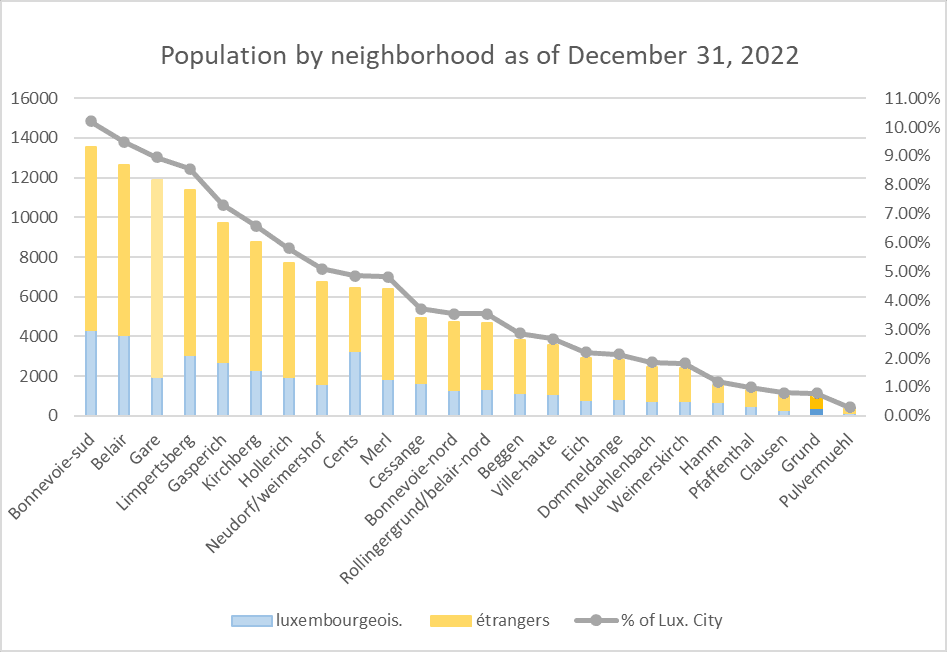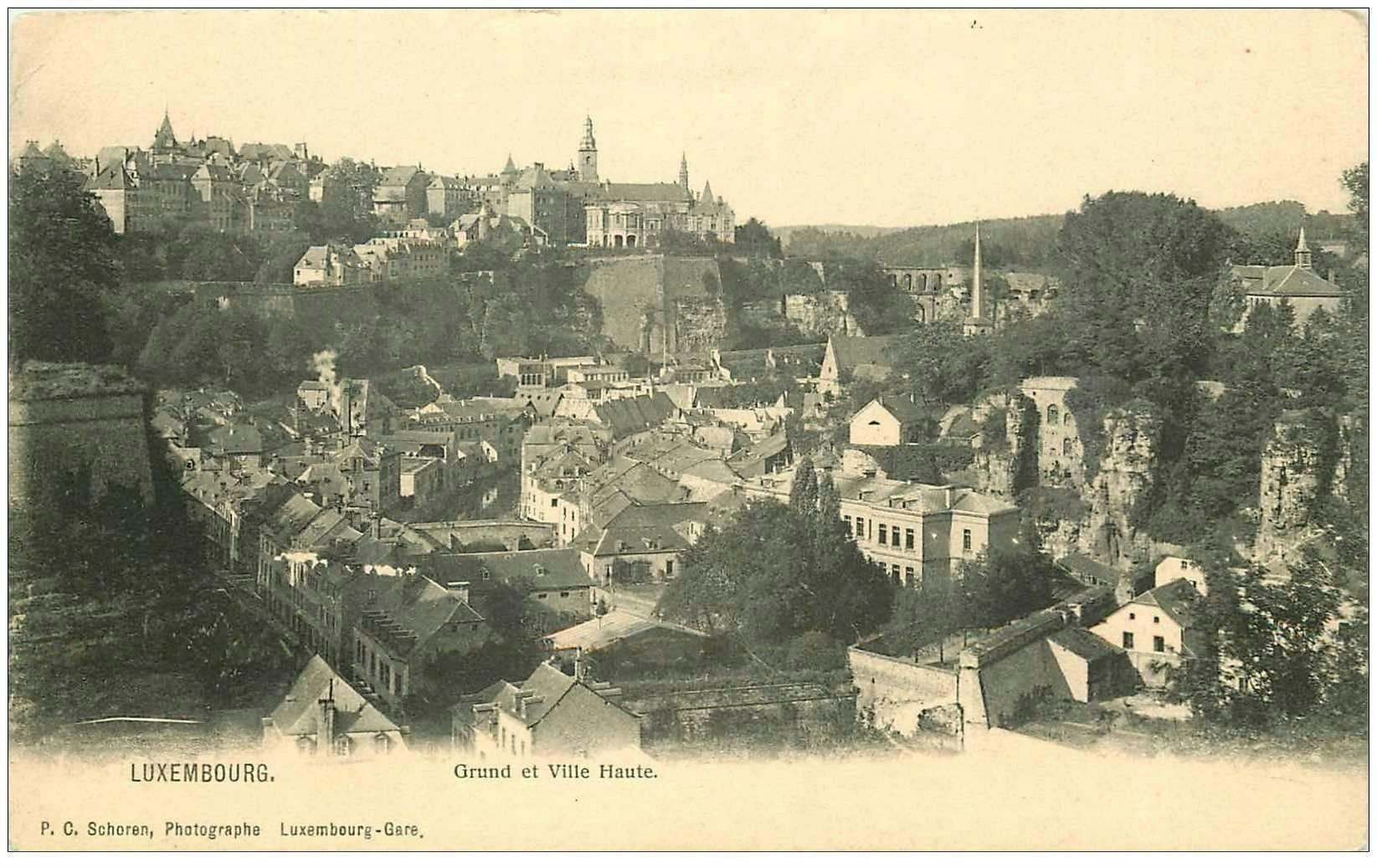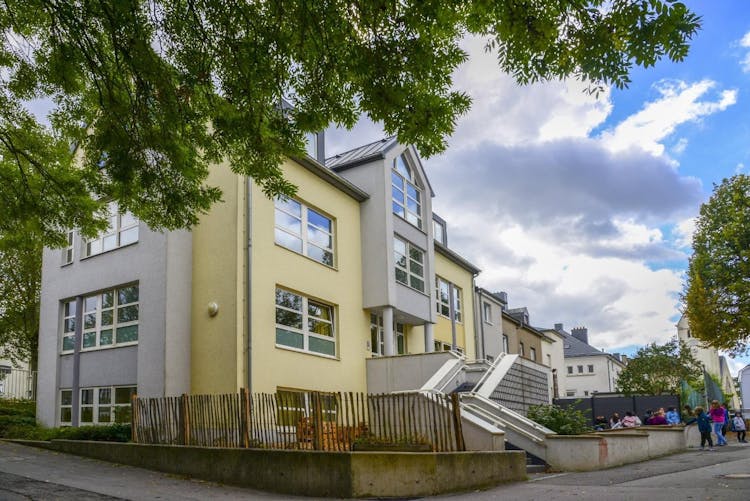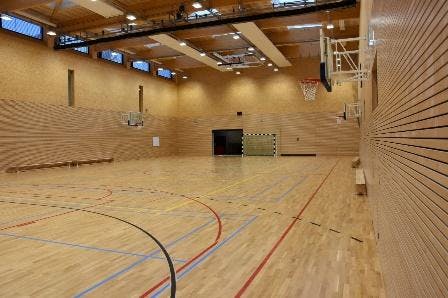
Grund: the smallest neighborhood and historical landmark of Luxembourg City
In this article, we step into the rich fabric of Grund, exploring its historical roots, examining the dynamic population, and weighing the pros and cons of residing in this unique place.
The Grund neighborhood, nestled in the heart of Luxembourg City, is a gem of authenticity and charm. Despite being one of the smallest neighborhoods, it boasts a central yet tranquil location, bordered by Pfaffenthal, Clausen, Cents, Pulvermühl, Bonnevoie-Nord, Gare, and Ville Haute.
General characteristics of Grund
Renowned for its preserved village-like ambiance, Grund is steeped in history, with UNESCO-listed landmarks like the Neimënster Abbey and cobblestone streets dating back to the 10th century, such as the enchanting Bisserwee. We'll navigate the intricacies of transportation accessibility, take a look at the communal infrastructure including schools, cultural centers, and healthcare facilities, explore the green spaces that grace the neighborhood, and provide insights into the real estate landscape.
Population of Grund
This neighborhood, one of the least populated residential areas in Luxembourg's capital, stands as a unique historical site. Its distinctiveness arises not merely from the size of the area, but also from the prestigious status it commands.
Grund, a neighborhood in Luxembourg, exhibits a unique demographic profile, with 60% of its residents originating from foreign countries. However, it ranks as the third least populated area in terms of foreign residents when compared to other neighborhoods. This is in stark contrast to the citywide average, where the foreign population constitutes 70.82%.

The Grund is renowned for its authentic charm, preserving a tranquil village atmosphere within Luxembourg City. Nestled amidst historic surroundings, it's recognized for its cobblestone streets, rustic architecture, and the picturesque Neumünster Abbey.
Transport accessibility
Exploring Grund comes with certain transportation nuances, including limited public transit options and parking constraints. Navigating the neighborhood requires thoughtful consideration of the available modes of transportation.





Renting and buying real estate
In the charming neighborhood of Grund, Luxembourg, property seekers can find a financially attractive option with real estate prices averaging 10,345 euros per square meter. This rate is notably more affordable compared to the city's overall average of 12,243 euros per square meter.
For buying the average price is
For renting the average price is
Opting for Grund offers a cost-effective choice for those looking to buy property in Luxembourg City, balancing reasonable pricing with the benefits of city living. However, it's important to note that rental prices in Grund slightly exceed the citywide average, standing at 31.46 euros per square meter, compared to the general average of 30.58 euros per square meter.
Applications, search, and profound advice in our guide to renting

Infrastructure of the neighborhood
Grund's infrastructure weaves a tapestry of charm and historical significance. While the neighborhood boasts cultural gems like the Neumünster Abbey, a hub for vibrant events, and the National Institute of Sports, it faces limitations in education, healthcare, and shopping. Navigate the quaint cobblestone streets and discover the balance between historical richness and the evolving needs of a community.
We invite you to read other articles covering various communes and neighborhoods within the city, so when you consider living or moving in Luxembourg, you have all the answers you might need.
Living in Grund: advantages and disadvantages
The Grund is cherished for its welcoming and serene ambiance, adorned with picturesque streets and rustic charm.
Known for its picturesque, historical charm, Grund is a UNESCO World Heritage site, boasting cobblestone streets, old buildings, and stunning views. It's a cultural hotspot, with numerous art galleries, museums, and music venues, contributing to a vibrant cultural scene. Despite its urban setting, Grund offers actual tranquility. The area is noted for its diverse, cosmopolitan community and great restaurants.
Living in Grund can be expensive, with high housing costs and overall living expenses. The narrow streets and limited parking pose challenges for car owners, and being a popular tourist destination, it can get crowded, particularly during peak seasons. This popularity also leads to higher noise levels, especially near bars. Furthermore, the historic nature of the district means that housing options are limited and often pricey.
Each of these factors contributes to the unique experience of living in the Grund district, appealing to those who enjoy a lively, historic, and culturally rich life in Luxembourg.
What is there in this quartier of Luxembourg City?
Grund's infrastructure weaves a tapestry of charm and historical significance. While the neighborhood boasts cultural gems like the Neumünster Abbey, a hub for vibrant events, and the National Institute of Sports, it faces limitations in education, healthcare, and shopping. Navigate the quaint cobblestone streets and discover the balance between historical richness and the evolving needs of a community.
The Grund lacks primary schools, high schools, and universities within its bounds, with only a childcare center present. Educational amenities are relatively limited, necessitating residents to explore neighboring districts for comprehensive educational facilities. While the neighborhood is rich in cultural and historical appeal, families may need to look beyond Grund for a more extensive range of educational opportunities.
Childcare center Haus vun de Kanner
In the Grund neighborhood, notable cultural centers include the Neimënster Abbey and the National Museum of Natural History.
Learn more about Luxembourg's culture and traditions in our special guide.
While Grund lacks local hospitals or clinics, viable healthcare alternatives are conveniently located nearby. In the neighboring district of Gare, just a 5-minute drive to the south, the Clinique Zitha. Should specific services not be available, the Kirchberg Hospital is swiftly accessible within a 10-minute drive or 25 minutes via public transport.
Additionally, the Centre Hospitalier de Luxembourg is reachable in approximately 15 minutes by car or 25 minutes using public transportation, ensuring residents have prompt access to diverse healthcare options within a short travel radius.
Within the neighborhood, only one spacious playground area is situated to the south, featuring wooden playhouses, ping pong and basketball courts, and various amusements for children. A small football field is available to the north, providing outdoor recreation options for residents and enhancing the neighborhood's appeal for families with young ones.
Along the Alzette river and within the district, there are several parks and open spaces where locals and tourists can enjoy outdoor activities, picnics, and relaxation.
- Playground Bisserwee: Bisserweg, Grund
- Football field: 21 Rue de Treves, Grund Luxembourg
Grund boasts excellent sports infrastructure, being home to the National Institute of Sports (INS). Functioning as a national sports training and education center, the INS, under the authority of the Minister of Sports, offers a plethora of facilities. From multipurpose sports halls and gyms to football and volleyball courts, along with athletics tracks, this center provides a comprehensive range of amenities for sports enthusiasts, contributing significantly to the neighborhood's active and vibrant atmosphere.
- Phone: (+352) 24 78 34 00
- Website: ins.lu
In Grund, charming bars and restaurants with lovely summer terraces offer an ideal setting for socializing and dining. However, the neighborhood lacks a variety of shops for a broader shopping experience, making a trip to the city center, conveniently nearby, more suitable.
There are no supermarkets within the neighborhood, requiring residents to venture to Ville Haute or slightly south to the Gare district for grocery shopping.
- While Grund offers delightful culinary options, residents often explore the neighboring areas for a more extensive range of shopping and dining opportunities.
Historical overview
In the late Middle Ages, along the banks of the Alzette River, artisans seeking the water's edge for their craft established a presence.
Roman bridge
Almünster Abbey

When Grund recieved the UNESCO heritage status?
In 1994, the UNESCO recognition of Luxembourg City's fortress and Old Town, encompassing Grund, solidified its historical significance.
Frequently Asked Questions (FAQ)
What is the Grund neighborhood known for?
The Grund is renowned for its authentic charm, preserving a tranquil village atmosphere within Luxembourg City. Nestled amidst historic surroundings, it's recognized for its cobblestone streets, rustic architecture, and the picturesque Neumünster Abbey. The neighborhood's distinct blend of history and modernity makes it a unique and inviting locale.
Are there historical landmarks in the Grund?
Absolutely, The Grund is rich in historical landmarks. Notable among them is the Neimënster Abbey, originally an 11th-century Benedictine monastery. Classified as a UNESCO World Heritage site, it stands as a testament to centuries of cultural heritage, complemented by charming cobblestone streets and medieval architecture.
What cultural centers can be found in the Grund?
Grund hosts prominent cultural centers, notably the Neimënster Abbey, now home to the Cultural Center of Encounter, Abbaye de Neimënster. This vibrant venue offers a cultural hub with a diverse array of events, including concerts, exhibitions, and seminars, fostering a dynamic and enriching community spirit.
What are the transportation options available in and around the Grund?
The Grund provides diverse transportation options. For commuters, there's convenient access by car to the city center within 5 to 10 minutes, though parking can be challenging. Public transport includes limited but essential bus services, and cycling proves efficient, with bike-friendly routes connecting the neighborhood to the city center and train station. Walking is also a delightful option, with the Saint Esprit elevator facilitating quick access to Ville Haute.
Source: fr.wikipedia.org, lb.wikipedia.org, www.justarrived.lu, www.vdl.lu, www.vdl.lu, fr.wikipedia.org, en.wikipedia.org, fr.wikipedia.org, sports.public.lu, www.immotop.lu
We took photos from these sources: Photo by Llibert Losada on Unsplash



